

This weekend I was visiting one of the many free museums in Washington, D.C. (a perk of living in this city) and found an incredible poster at the National Museum of American History. Weimer Pursell’s color illustration depicted a well-dressed man behind the wheel of a 1940s convertible — with the ghostly outline of the Führer sitting next to him; it implored Americans to save gas during World War II by joining a car pool.
“When You Ride Alone You Ride With Hitler!” the letters scream. It is one of the war’s most famous posters and, while it has been copied and parodied since then, its message of national sacrifice resonates to this day.
Imagine that: During World War II Americans were told that riding alone in a car was like riding with Hitler. Saving and conserving, and helping others, was lifted up — in this and many other posters —


The Pentagon’s defiant pledge to stick with the Rush Limbaugh show, no matter what, bumps up against a few hard and insulting realities. The Armed Forces Network that carries the Limbaugh show is not a private business, corporation, or proprietorship that can do whatever it pleases with its money, personnel, operations and policy. Every penny of the armed forces bloated budget comes from taxpayers. The Armed Forces Network, which has beamed the Limbaugh show for two decades, is oiled to the tune of an estimated $27 million annually. Every penny of which comes from the pockets of taxpayers. And since the military is not a democracy, and decisions are made top down, there was never any chance that taxpayers would have any say about the use of their money to subsidize the naked bias of one radio jock at public expense.
The same rule applies to those in the military that have had Limbaugh shoved down their listening palate.
» Read more about: What Budget Cuts? Tax Dollars Promote Rush Limbaugh’s Show »


I’m going to hate writing this. Every word.
Last week Masaharu Morimoto of Iron Chef fame was outed by my union, UNITE HERE, Local 11 as being in talks with the Hyatt Andaz hotel to take over the RH restaurant, where I work as a server.
I first became aware of the news when I arrived at a large picket in front of the Hyatt Andaz. The action was two days before Valentine’s Day. I was late to the picket because, as noted in an earlier column, I had to drive my mother-in-law to Walmart — which still pains me to admit.
The action in front of my hotel, like many before, was about protesting current work and safety conditions. It was co-sponsored by OUT and OCCUPY, which is a LGBTQ organization that has been unified with UNITE HERE Local 11 in making sure that all workers,
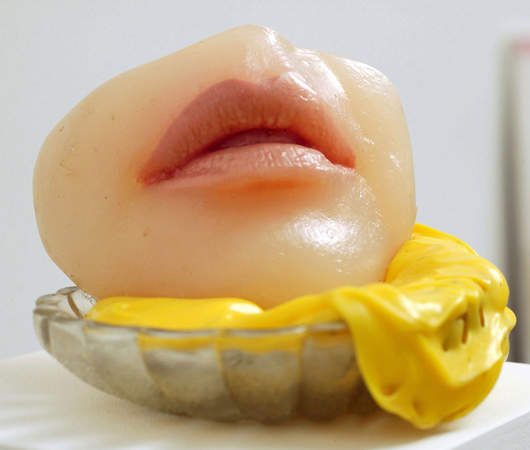

If you’re a woman, an artist, a cancer survivor or patient; someone with a connection to the Holocaust or the 1960s women’s movement — in fact, if you’re anyone who wonders how we human beings can endure indescribable suffering and come out the other end with something to say about it – you must see Alina Szapocznikow, Sculpture Undone at the Hammer museum before it closes April 30th. I fit a number of those categories and was deeply moved to find such connections with the work.
At the beginning of the exhibit you meet the artist (who died in 1973 at the age of 47) in a rough video. She’s young and lively and seems so innocent. When the thick-headed interviewer asks about her experiences as a young girl in a Nazi concentration camp, Szapocznikow responds with “it would be immodest to discuss my own suffering.” When the same off-screen voice asks her to describe what it’s like to be a woman in 1960s Poland,
» Read more about: The Body Reconsidered: The Art of Alina Szapocznikow »

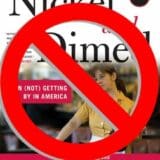
As an author, my place on bookshelves is precarious. You can have your book banned in this country for any number of reasons. Schools especially might find a book profane or inappropriate. Or, as in the case of J.R.R. Tolkien’s The Lord of the Rings, your work might be thrown into the pyre for being “satanic.”
None of this surprises me. This does: Barbara Ehrenreich’s well-received 2001 book Nickel and Dimed was removed from a personal finance class in Bedford, N.H., for being “anti-capitalist.”
Seriously.
Nickel and Dimed chronicles Ehrenreich’s quest to explore our economy from the perspective of an “unskilled” worker. Propelled into her social experiment by the debate over welfare, she moved across the country, taking the cheapest lodgings and whatever work she could find, from clerk to hotel maid. The result sheds light on the experience of what it means to survive on poverty-level wages in the U.S.
» Read more about: Banned in America: The Truth About Poverty »


Matthew Fleischer, over at Fish Bowl L.A., notes approvingly that APM radio’s Marketplace program will begin broadcasting stories about people who are not billionaires — but who, instead, are struggling in the trough of America’s current economic mood swing. Says Fleischer:
Well, here’s a welcome surprise. The national media is starting to realize that the oligarchical distribution of wealth to the top one percent of Americans isn’t a manufactured Occupy Wall Street narrative. American Public Media’s Marketplace announced today that it’s launching a new “Wealth and Poverty Desk” focused on “the growing concentration of wealth in the U.S.”
We’ve all wondered what a section of the news devoted to labor and to those not working would look — this could be a good start. This week Marketplace began its new project by profiling the “working poor”
» Read more about: WebHot: Marketplace's “Wealth and Poverty Desk” »


It’s fascinating to watch an industry attempt to define and structure itself as it comes together. Imagine Silicon Valley in the late 1990s, nuclear power in the 1960s, alcohol in the 1930s, or the auto industry in the 1900s and 1910s.
I got to see shades of this recently when I visited the High Times Medical Cannabis Cup, held at L.A. Center Studios. Despite the carnival atmosphere, this was essentially a trade show for an industry in its inception. A friend had to deliver some union materials to a labor-friendly vendor, and I tagged along, chatting with representatives from all segments of the industry.
Most press accounts have caricatured the industry as a joke. But with potential national revenue that could be as large as $120 billion annually (estimating the true size is notoriously difficult), and with boosters predicting potential California employment in the tens of thousands,
» Read more about: Seeing Green: Is an Underground Industry Going Legit? »
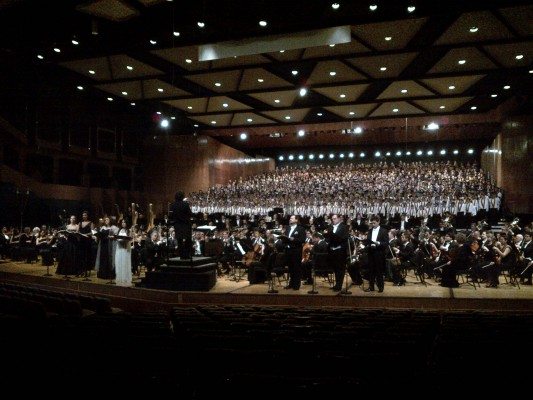

It wasn’t exactly Tahrir Square, but one recent Saturday afternoon, through modern technology, I joined an estimated two million people throughout Latin America, the U.S. and Canada in 500 different venues to experience a different kind of democracy movement – call it musical democracy.
We were all gathered to watch Gustavo Dudamel of the LA Philharmonic Orchestra conduct 1,400 performers in Gustav Mahler’s Eighth Symphony in Caracas, Venezuela.
The 1,200 young members of the chorus, and the Venezuelan musicians who played alongside the pros of the LA Phil, are products of “El Sistema,” the innovative choral and orchestral training system aimed at the country’s poorest children . The program currently involves 250,000 kids and 135 youth orchestras throughout the nation of 30 million. Dudamel is a product of that system, as are the numerous talented Venezuelan musicians now getting scooped up by topnotch classical music venues throughout the world.
Founded as an anti-drug,
» Read more about: Gustav, Meet Gustavo: Hearing Mahler in the Cineplex »
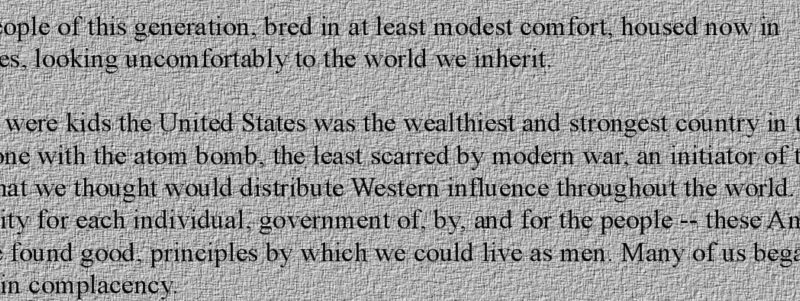
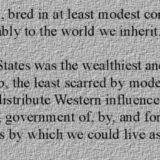
Recently I was invited to speak at a conference marking the 50th anniversary of the Port Huron Statement. Never heard of it?
In 1962, at a United Auto Workers conference center in Port Huron, Michigan, about 60 student activists collectively hammered out what they named an “Agenda for a Generation” with the strong belief that this document could help create the world they hoped for. “We regard men as infinitely precious and possessed of unfulfilled capacities for reason, freedom, and love,” it optimistically declared.
Most were in their 20s, several veterans of civil rights sit-ins or campaigns to end the nuclear arms race. Participatory Democracy was the overall framework – a political vision in which people have power over the decisions that affect their lives. In all-night sessions they argued about wording and emphasis and produced a document that addressed the major challenges of unrepresentative politics, a profit-driven economy and inequality at home and abroad.
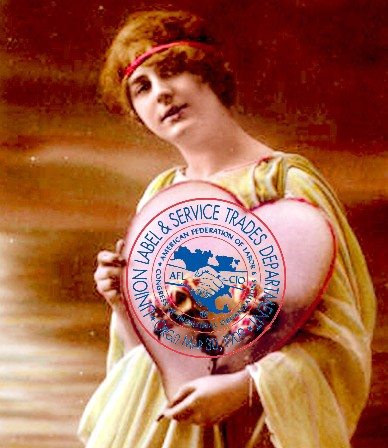
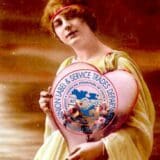
We know it’s last-minute, but for those wishing to celebrate Valentine’s Day with a tip of the hat to labor, the folks at L.A. Labor 411 have a list of businesses you may be in need of February 14 that proudly fly the union label. The following are a representative sampling from some select categories.
Ghirardelli Chocolates
Hershey Chocolate
Hershey Kisses
Russell Stover Candy
See’s Candies
Godiva Chocolates
Albertsons
El Super
Gelson’s
Ralphs
Stater Bros.
Vons
United States Postal Service
UPS
Encounter Restaurant LAX
La Scala
Musso & Frank Grill
Beverly Hilton
Doubletree San Pedro
Fairmont Miramar
Renaissance Hollywood
Sheraton Universal
Westin Bonaventure


It seems inevitable that national coverage of the Occupy movement has been dying down. The sporadic stories I read are of arrests of occupiers in different cities, but I surmise that this too will eventually become old hat in the media and we will soon settle our attentions wholeheartedly on the presidential election, which in my opinion is a real shame.
I’ve grown weary of our gerrymandered elections. For a country that holds freedom of choice so dear to American life, I find it odd and disheartening that we are really only given two parties to choose from. The consumer in me gets depressed every election cycle. It’s akin to going to Ben and Jerry’s and being told that you can only have chocolate or vanilla.
My sincere hope is that this year the narrative is different. I am pinning my hopes on the Occupy movement to resurrect itself to the national news media and overshadow our fixed-choice election for the presidency.


Mr. Frank McCourt
Los Angeles Dodgers LLC
1000 Elysian Park Avenue
Los Angeles, CA 90012
Dear Frank,
In my 17 years, I’ve been to over 150 Dodger games. I’ve never seen them better than in 2009, when they defended the National League West title and played the Phillies in the NLCS. You were owner then, remember? Remember Mannywood? We swept the Cardinals in the Division Series. So much promise, so much hope.
Of course, it didn’t last. The day before we played the Phillies in Game One, you and Jamie announced you were getting divorced. I never understood how you thought that was a good idea, to announce it that day. We lost to the Phillies in five games.
And the unraveling began. You fired your wife. We found out neither of you paid any income taxes from 2004-2009. You had the Dodger Dream Foundation pay your friend $400,000 in one year.


We are the 99 percent. Well, yes we are, but not everyone among us thinks so. Lots of people think they are part of the 1 percent when they aren’t even close. According to Harper’s Index 13 percent of Americans think they are part of the1 percent, and 28 percent of “Hispanic Americans” think they are part of the 1 percent. Since these are statistical impossibilities, it makes me wonder why people don’t identify with who they are instead of who they are not.
Some people identify with the rich because they expect to be rich some day. That is why so many low-income people play the lottery. One day their ship will come in. On the other hand, many people think that if they work hard, climb the ladder and make a few clever deals, they too will be rich. Some 43 percent of Americans actually think that.


In the summer of 1963 between high school and college I badly needed a job. A friend from my class at Hollywood High School, who thought of himself as a free thinker and was headed to Reed College, told me his dad had a position open for a secretary and, with his help, I could get hired.
Quality Collection Company was located in a grungy office building in downtown L.A. and was run by my friend’s father and uncle who pretended they were lawyers. The company purchased contracts for items sold door to door in mostly black and Latino neighborhoods in Los Angeles and attempted to collect what was owed on those contracts. Families may have signed up for a deep freezer, not realizing that expensive monthly purchases of meat were part of the deal; or found they had committed to purchasing aluminum siding they didn’t need and couldn’t afford.
My job was to send out the increasingly shrill collection notices on these contracts that included more and more bold black or red lettering and exclamation marks threatening to garnish their wages or repossess their belongings if they didn’t pay up.


Many of us love Los Angeles, but few get paid to love it. Los Angeles magazine editor-in-chief Mary Melton is one of the lucky few. Since taking over as editor in 2009 (she had been executive editor since 2002), Melton has continued to push the publication beyond its former Westside comfort zone into the far corners of our megalopolis.
A native Angeleno, Melton – whose great-grandmother came to L.A in 1918 to escape the stifling constraints of her upper-crust Midwest family – went to Hollywood High and worked for years at the L.A. Weekly and the L.A. Times before coming over to Los Angeles magazine. She rides the bus from Eagle Rock to work when she can, and thinks every public official should be required to do the same at least once a week. This is hardly Melton’s only civic improvement idea —
» Read more about: Los Angeles Magazine’s Mary Melton on What’s Wrong With the Times »


Last year, we wrote a few articles about college football, one recommending that the NFL Players Association should join forces with the National College Players Association to organize college football workers. And now, in a way, they have, or at least so the NFL thinks.
This Saturday, the NFLPA is organizing its Astroturf Collegiate Bowl at Carson’s Home Depot Center, wherein some of the top college prospects expected to enter the NFL next year will battle each other in one of several college all-star games.
Though this seems wholly positive for the league, apparently they are in a bit of a snit owing to the fact that the NFLPA has invited not just seniors with no college eligibility left, but also underclassmen. As such, the NFL has said it will prohibit scouts from attending the game.
» Read more about: Amateur Hour: NFL Fumbles Policy on College Game »
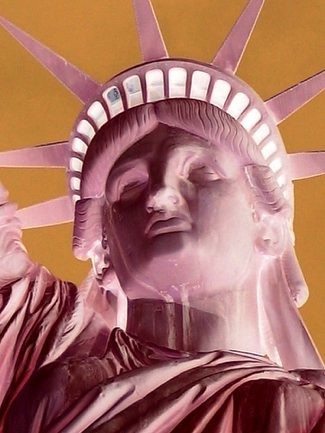

By Jim Hightower
(This feature first appeared on Truthout.org)
Being at the bottom of the heap in terms of social justice confirms the reality of both economic and political inequality that the Occupy movement is protesting.
“USA: We’re No. 1!”
Oh, wait — Iceland is No. 1. But we did beat out Poland and Slovakia, right? Uh . . . no. But go on down the rankings and there we are! No. 27, fifth from the bottom. So our new national chant is, “USA: At Least We’re Not Last!”
A foundation in Germany has analyzed the social justice records of all 31 members of the Organization for Economic Co-operation and Development (OECD), ranking each nation in such categories as health care, income inequality, pre-school education, and child poverty. The overall performance by the United States — which boasts of being an egalitarian society — outranks only Greece,
» Read more about: Social Justice Rankings: America 27th Out of 31 »


In recent weeks the more poetically inclined of us at Frying Pan News have borrowed inspirations ranging from Doctor Seuss to Clement Clarke Moore to express their hopes for the environment and the economy. Now, Jessica Goodheart and Trebor Healey borrow a leaf from Bashō and squeeze green sentiments into a trio of haiku.
(Photo credits: Port of L.A., Brian Ferguson, Louise Rosskam)


I spent last Saturday morning at the five-acre Annenberg Community Beach House complex which, as far as I know, is the only publicly accessible beach facility on the entire coast of our great state. About 200 of us were gathered to honor the 31-year tenure of Barbara Stinchfield, a Santa Monica city staffer who led the effort to finance, design, build and manage the newly opened beach facility for community use.
With a public pool, playground, shaded seating areas, outdoor fountain, public meeting rooms and an indoor-outdoor reception room, the complex, located on the “Gold Coast” adjacent to high-end beach homes, offers ordinary people the beauty of the California beachfront in a tastefully designed building – just what the wealthy can afford to buy in a private beach club.
The “private sector” would have had no incentive to build a public facility like this since it generates no profit and its primary mission is service to the public.
» Read more about: Public Lives: In Praise of a Community Oasis »